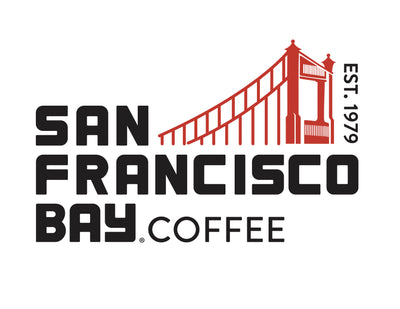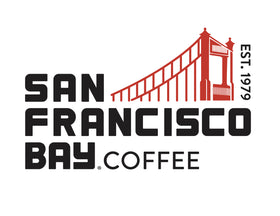36 Coffee Terms to Know: Your Helpful Glossary

Whether you're just beginning your coffee journey or looking to deepen your knowledge, understanding coffee terminology can transform your daily brewing experience. The world of coffee is rich with specialized language that describes everything from bean varieties to brewing techniques, and knowing these coffee terms helps you make more informed choices about what you're drinking and how you're preparing it.
This glossary covers essential coffee terms you'll encounter when reading product descriptions, following brewing guides, or exploring new flavors. Don't shy away from new terminology - each term represents a different aspect of the coffee experience that can enhance your appreciation and help you discover brewing methods that might become your next favorites.
Bean Basics
Understanding coffee terminology starts with the beans themselves. The two primary species of coffee beans dominate the global market, each with distinct characteristics that affect everything from flavor to caffeine content.
ARABICA represents approximately 60-70% of global coffee production and is widely considered the superior species for flavor complexity. Arabica beans typically offer more nuanced, sweeter flavors with higher acidity and aromatic qualities. These beans grow best at higher altitudes and are more susceptible to weather and pests, making them generally more expensive but preferred by specialty coffee roasters.
ROBUSTA makes up most of the remaining coffee production and is known for its higher caffeine content (nearly double that of Arabica) and more robust, often bitter flavor profile. These beans are hardier, disease-resistant, and can grow at lower altitudes, making them more economical. Robusta is commonly used in espresso blends for its ability to produce excellent crema.
SINGLE-ORIGIN COFFEE refers to beans sourced from one specific location—whether that's a single farm, region, or country. These coffees allow you to taste the unique characteristics imparted by specific growing conditions, processing methods, and local climate. Single-origin coffees are prized for their traceability and distinctive flavor profiles.
BLENDS combine beans from multiple origins to achieve specific flavor profiles, consistency, and balance. Master roasters carefully craft coffee blends to highlight the best characteristics of different beans while creating complex, well-rounded flavors that remain consistent batch after batch.
Coffee Roasts

Coffee roasting transforms green, unpalatable coffee beans into the aromatic, flavorful beans we recognize. Understanding roast terminology helps you predict flavor characteristics and choose coffees that match your taste preferences.
LIGHT ROAST coffee maintains most of the bean's original characteristics and flavors. These roasts are typically more acidic, with bright, fruity, or floral notes. The beans appear light brown with no visible oil on the surface. Light roasts preserve the highest levels of antioxidants and showcase the unique terroir of the growing region.
MEDIUM ROAST represents the perfect balance between origin characteristics and roast development. These beans display a medium brown color with minimal surface oils and a harmonious blend of acidity and body. Medium roasts are often considered the most approachable, providing complexity without overwhelming intensity.
MEDIUM-DARK ROAST begins to show slight surface oils and displays darker brown coloration. At this level, roast characteristics complement and sometimes overshadow origin flavors, creating rich, full-bodied coffee with reduced acidity and increased sweetness.
DARK ROAST features beans with obvious surface oils and dark brown to nearly black coloration. These roasts emphasize bold, smoky, and sometimes bitter flavors with minimal acidity. The roasting process becomes the dominant flavor influence, making origin characteristics less distinguishable.
FRENCH ROAST and ITALIAN ROAST represent the darkest end of the roasting spectrum, where beans become very dark with pronounced surface oils. These roasts produce intense, smoky flavors with minimal origin character remaining.
Brewing Methods
The terminology around brewing methods helps you understand how different techniques extract flavors from coffee grounds and achieve various flavor profiles.
DRIP COFFEE refers to any method where hot water passes through coffee grounds via gravity. This includes automatic drip machines, pour-over methods, and batch brew systems. Drip brewing typically produces clean, well-balanced coffee with bright acidity and medium body.
POUR-OVER COFFEE involves manually pouring hot water over coffee grounds in a controlled, circular motion. This method allows precise control over water temperature, pouring speed, and extraction time. Popular pour-over devices include the V60, Chemex, and Kalita Wave, each producing slightly different flavor profiles based on their design and filter types.
FRENCH PRESS (sometimes called a press pot or plunger pot) uses immersion brewing, where coffee grounds steep in hot water for several minutes before being separated by pressing a metal filter through the liquid. This method produces full-bodied coffee with rich texture and more oils than paper-filtered methods.
ESPRESSO forces hot water through finely ground coffee under high pressure (approximately 9 bars) to produce a concentrated, intense shot typically served in 1-2 ounce portions. Espresso forms the base for numerous coffee drinks and is characterized by its thick body, rich flavor, and golden crema on top.
COLD BREW steeps coarsely ground coffee in cold or room temperature water for 12-24 hours, then strains the grounds to produce a concentrate. This method creates smooth, low-acid coffee that can be served hot or cold, offering a flavor profile different from that of hot-brewed coffee.
AEROPRESS combines immersion and pressure brewing. Coffee steeps briefly before being pressed through a paper filter using manual pressure. This method produces clean, bright coffee with excellent clarity and minimal bitterness.
Coffee Formats

Understanding how coffee is processed and packaged helps you make informed purchasing decisions and achieve optimal brewing results.
WHOLE BEAN COFFEE maintains peak freshness longer than pre-ground coffee because the bean's protective outer shell keeps flavor compounds intact until grinding. Whole beans allow you to grind coffee just before brewing, which produces the most flavorful results.
GROUND COFFEE offers convenience but begins losing flavor compounds immediately after grinding due to increased surface area exposure to air. Different grind sizes are optimized for specific brewing methods - coarse for French press, medium for drip coffee, and fine for espresso.
INSTANT COFFEE (or soluble coffee) consists of brewed coffee dehydrated into powder or granules. While convenient, instant coffee typically lacks the complexity and fresh flavor of freshly brewed coffee from whole beans.
COFFEE PODS provide single-serving portions of pre-measured, often pre-ground coffee sealed in individual containers. These formats prioritize convenience but may compromise on freshness and environmental sustainability. However, San Francisco Bay Coffee's OneCUP™ pods are made from plant-based compostable materials and are BPI® certified for commercial composting, breaking down within 84 days in industrial composting facilities.
DECAFFEINATED COFFEE has had at least 97% of its caffeine removed through various processing methods. The Swiss Water® Process and CO2 extraction methods preserve more flavor than chemical solvent methods, though all decaffeination processes affect the final taste profile to some degree. San Francisco Bay Coffee uses the Swiss Water® Process, which removes 99.9% of caffeine without chemicals by soaking green beans in hot water and using proprietary carbon filters to trap caffeine molecules while preserving flavor compounds.
Ethical & Environmental Labels
Coffee packaging often includes certifications that indicate specific farming, processing, or trade practices. Understanding these terms helps you make choices aligned with your values.
ENVERITAS VERIFICATION is a comprehensive assessment system that evaluates coffee production's social, environmental, and economic criteria based on international protocols. This verification measures ethical labor practices, environmental protection, chemical safety, community development, economic sustainability, and supply chain traceability. San Francisco Bay Coffee achieved 100% Responsibly Sourced status through Enveritas verification, supporting the organization's mission to eradicate poverty in coffee farming communities by 2030.
ORGANIC CERTIFICATION indicates that the coffee was grown without synthetic pesticides, herbicides, or fertilizers. Organic farming practices often support biodiversity and soil health, though certification requirements vary by country and certifying body.
RUST TRUST PROJECT addresses coffee leaf rust, a devastating fungal disease that can destroy up to 50% of coffee production. This initiative, supported by San Francisco Bay Coffee, provides coffee farmers with disease-resistant plants and two years of technical assistance to ensure proper cultivation. The program combines plant donations with agricultural education to help farming communities rebuild their plantations and improve long-term productivity after rust damage.
ZERO WASTE CERTIFIED represents comprehensive waste management practices that divert materials from landfills through recycling, composting, and reuse programs. San Francisco Bay Coffee has achieved Zero Waste Silver Certification from Underwriters Laboratories (UL), meaning 94% of waste from their facility is diverted to compost fields or recycling centers rather than landfills.
Bonus Coffee Terminology for Enthusiasts

CUPPING is the professional method for evaluating coffee quality and flavor characteristics. This standardized tasting process involves steeping coarsely ground coffee in hot water, then systematically evaluating aroma, flavor, acidity, body, and aftertaste. Professional cuppers use specific protocols developed by the Specialty Coffee Association to score coffees on a 100-point scale.
TERROIR is borrowed from wine terminology, and describes how environmental factors, like soil composition, climate, altitude, and local growing conditions, influence coffee flavor. Each coffee-growing region imparts unique characteristics that experienced tasters can identify, making terroir a crucial concept in understanding single-origin coffees.
CREMA is the golden-brown foam that forms on top of properly extracted espresso. It results from emulsified oils and CO2 gas released during the high-pressure brewing process. Quality crema indicates fresh beans and proper extraction, though its presence doesn't guarantee superior taste.
BLOOM refers to when hot water first contacts freshly roasted coffee grounds, and trapped CO2 gas causes the coffee bed to expand. This initial release of gas helps ensure even water saturation and optimal extraction. Observing the bloom can indicate freshness as fresher beans produce more pronounced blooming.
BODY describes brewed coffee's tactile sensation or "mouthfeel" - its weight and texture on your palate. The coffee body ranges from light and tea-like to heavy and syrupy, and the brewing method, grind size, and bean characteristics influence it.
ACIDITY refers to bright, lively flavor characteristics that add complexity and liveliness to the cup of coffee. Coffee acidity isn't related to pH levels but describes desirable flavor notes like citrus, apple, or wine-like qualities that create a pleasant tartness.
EXTRACTION measures how much coffee's soluble compounds dissolve into the brewing water. Under-extraction produces sour, weak coffee, while over-extraction creates bitter, harsh flavors. Optimal extraction, typically between 18% and 22% of the coffee's mass, produces balanced, flavorful results.
GRIND CONSISTENCY is the uniform particle size in ground coffee that ensures even extraction during brewing. Inconsistent grinds lead to simultaneous under-extraction of large particles and over-extraction of small particles, creating muddy, unbalanced flavors. Quality burr grinders produce more consistent results than blade grinders.
San Francisco Bay Coffee
What coffee terms have you encountered that sparked your curiosity? Understanding these concepts can help you explore new brewing methods, try different origins, and better communicate your preferences when purchasing coffee. The beauty of coffee terminology is that each term represents another pathway to discovering flavors and techniques that might enhance your daily coffee ritual. San Francisco Bay Coffee offers plenty of amazing options to experience coffee in a new and fresh way.



